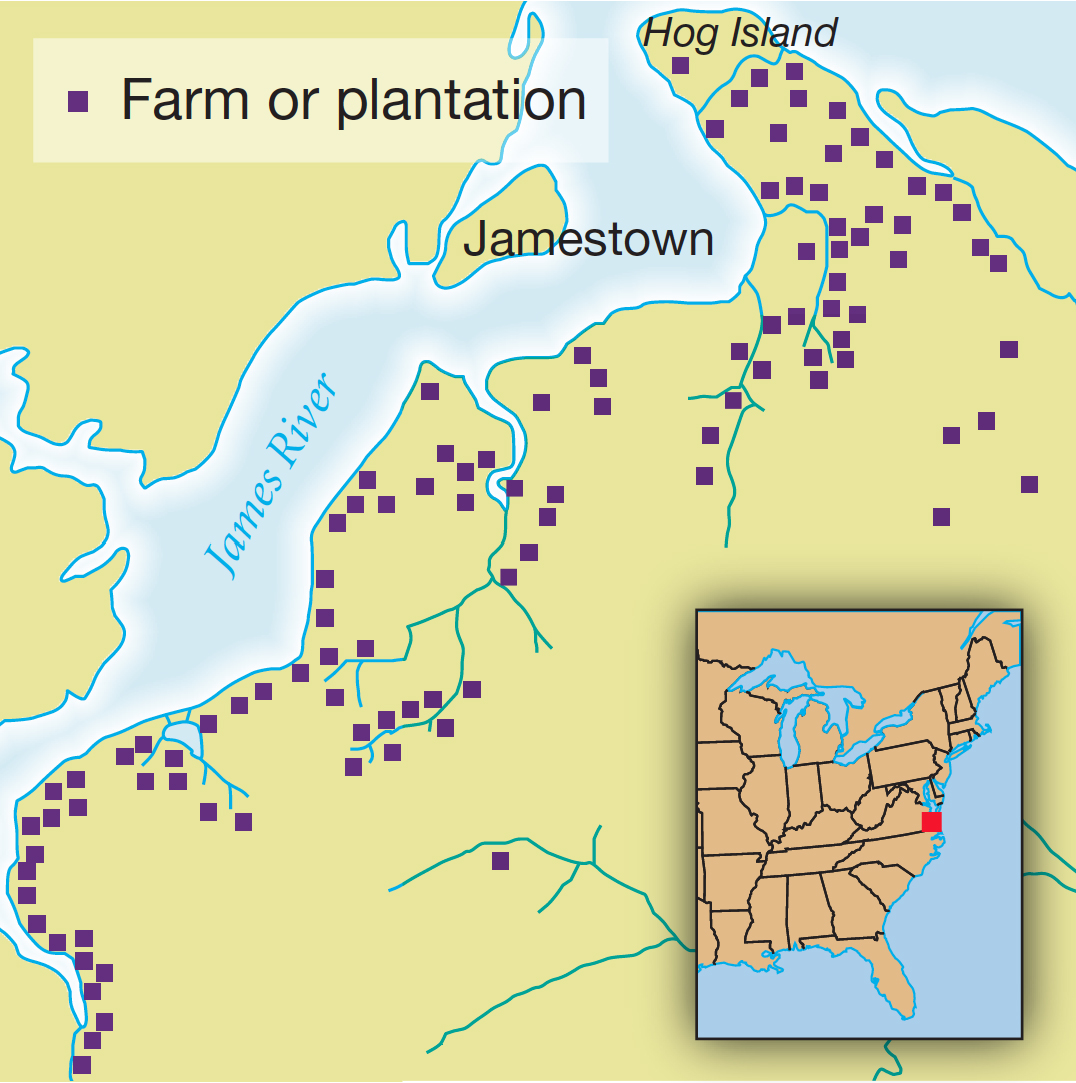Cultivating Land and Faith.
Printed Page 63 Chapter Chronology
Cultivating Land and Faith. Villages and small towns dotted the rural landscape of seventeenth-century England, but in the Chesapeake towns were few and far between. Instead, tobacco farms occupied small clearings surrounded by hundreds of acres of wilderness. Since tobacco was a labor-intensive crop that quickly exhausted the fertility of the soil, each farmer cultivated only 5 or 10 percent of his land at any one time. Tobacco planters sought land that fronted a navigable river in order to minimize the work of transporting the heavy barrels of tobacco onto ships. A settled region thus resembled a lacework of farms stitched around waterways.

Most Chesapeake colonists were nominally Protestants. Attendance at Sunday services and conformity to the doctrines of the Church of England were required of all English men and women. Few clergymen migrated to the Chesapeake, however, and too few of those who did were models of piety. Certainly, some colonists took their religion seriously. But on the whole, religion did not awaken the zeal of Chesapeake settlers, certainly not as it did the zeal of New England settlers in these same years (as discussed in chapter 4). The religion of the Chesapeake colonists was Anglican, but their faith lay in the turbulent, competitive, high-stakes gamble of survival as tobacco planters.

The situation was similar in the Catholic colony of Maryland. In 1632, England's King Charles I granted his Catholic friend Lord Baltimore about six and a half million acres in the northern Chesapeake region. Lord Baltimore intended to create a refuge for Catholics, who suffered severe discrimination in England. He fitted out two ships, the Ark and the Dove; gathered about 150 settlers; and sent them to the new colony, where they arrived on March 25, 1634. However, Maryland failed to live up to Baltimore's hopes. The colony's population grew very slowly for twenty years, and most settlers were Protestants rather than Catholics. The religious turmoil of the Puritan Revolution in England (as discussed in chapter 4) spilled across the Atlantic, creating conflict between Maryland's few Catholics — most of them wealthy and prominent — and the Protestant majority, most of them neither wealthy nor prominent. During the 1660s, Maryland began to attract settlers, mostly Protestants, as readily as Virginia. Although Catholics and the Catholic faith continued to exert influence in Maryland, the colony's society, economy, politics, and culture became nearly indistinguishable from Virginia's. Both colonies shared a devotion to tobacco, the true faith of the Chesapeake.